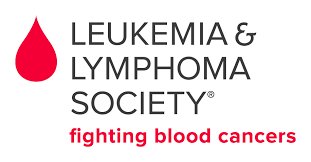Colorado Blood Cancer Institute (CBCI), a part of the Sarah Cannon Cancer Institute at Presbyterian/St. Luke’s Medical Center and a Sarah Cannon Transplant & Cellular Therapy Network member, created a comprehensive video to explain multiple myeloma in clear, concise way.
Myeloma is a type of cancer that involves plasma cells (a type of white blood cell which is also called a plasma B cell). The disease belongs to a spectrum of disorders called ‘plasma cell dyscrasias.’
The disease has several different forms:
- Multiple myeloma– Over 90 percent of people with myeloma have this type. Multiple myeloma affects many different parts of the body.
- Plasmacytoma – In this type, only one site of myeloma cell accumulation is apparent within the body, such as a tumor in the bone, skin, muscle, or lung.
- Localized myeloma– This type of the disease is present in one site of the body that is exposed to neighboring sites.
- Extramedullary myeloma– This type involves of bodily tissue other than bone marrow, such as the skin, muscles or lungs.
Like some other forms of blood cancer, doctors divide myeloma into two groups that categorize how quickly or slowly the disease is progressing:
- Asymptomatic or smoldering myeloma has slow progression and no evidence of symptoms.
- Symptomatic myeloma progresses more quickly with related symptoms such as anemia, kidney damage and bone disease.
How Does Myeloma Develop?
Myeloma develops when a plasma cell is changed, or mutated. B lymphocytes or B cells are a type of white blood cell that are present in the bone marrow. Plasma cells develop from these B cells and are an important part of your immune system. They make proteins called antibodies, which help fight infection.
When the mutated plasma cell (or myeloma cell) multiplies, these cells will continue to grow in the bone marrow if the disease if left untreated. The myeloma cells crowd out both the healthy plasma cells and the normal stem cells inside the bone marrow that form the white blood cells, red blood cells and platelets. Without treatment, the myeloma cells can:
- Crowd out heathy white blood cells so the immune system can't protect against infection effectively
- Secrete high levels of protein in the blood and urine, which can result in kidney damage
- Accumulate within bone, causing weakening and possible bone pain and fractures.
Signs and Symptoms
In the beginning stages of myeloma, some patients will not experience signs or symptoms of disease. In about 20 percent of myeloma patients, the cancer is found before symptoms appear as a result of detection during routine blood tests (done for purposes such as an annual physical exam), or an X-ray. Some symptoms of myeloma include:
- Bone pain and/or skeletal fractures. Bone pain is the most common early symptom of myeloma. Many patients feel pain in their back or ribs, but discomfort can be felt in any bone. The pain is often constant and worsened with movement.
- Anemia (Fatigue and weakness caused by low red blood cell counts). Myeloma patients may fatigue more easily than normal and often feel weak. They may also have a pale complexion due to their anemia (caused by a low hemoglobin concentration and/or a low red blood cell count). Anemia is a common medical problem for patients with myeloma.
- Frequent infections due to a weakened immune system. Myeloma patients may experience repeated infections since the antibodies normally used to fight invading viruses, bacteria or other disease agents are not effective or plentiful enough. A urinary tract, bronchial, lung, skin or other type of infection might be the first sign of disease. Continuous or recurrent infections may complicate the course of the disease.
Additional symptoms may include:
- Numbness, tingling, burning or pain in the hands or feet (caused by a condition called "peripheral neuropathy").
- High levels of calcium, which can lead to increased thirst and urination, constipation and, in extreme cases, decreased alertness and even kidney failure.
- In rare cases, patients can have hyperviscosity syndrome, resulting from high concentrations of “M” protein or “monoclonal immunoglobulin” in the blood, which causes the blood to become thick. The symptoms of hyperviscosity syndrome include abnormal bleeding, headaches, chest pain, decreased alertness or shortness of breath.
- Some patients have amyloidosis, a condition in which the abnormal myeloma protein is deposited into tissues of the body and can cause damage.
Doctors sometimes use the acronym, CRAB, to describe myeloma symptoms:
C - Calcium elevation/high calcium levels in the blood (“hypercalcemia”)
R - Renal insufficiency (poor kidney function that can result from decreased blood-flow to the kidneys)
A - Anemia (low red blood cell counts)
B - Bone abnormalities (lesions)
Patients with one or more CRAB symptoms are considered to have disease that requires therapy. Those who do not exhibit any of the CRAB symptoms are said to have ‘smoldering’ or asymptomatic myeloma. These patients may be followed with a watch-and-wait approach. Recently, additional symptoms that may indicate the need to start chemotherapy were added to the CRAB criteria. They include the following:
- At least 60 percent plasma cells in the bone marrow
- A free light chain ratio (involved light chain /uninvolved light chain) of 100 or greater
- More than one focal bone lesion on magnetic resonance imaging (MRI).
To learn more, visit The Leukemia and Lymphoma Society.
 Content provided by:
Content provided by: